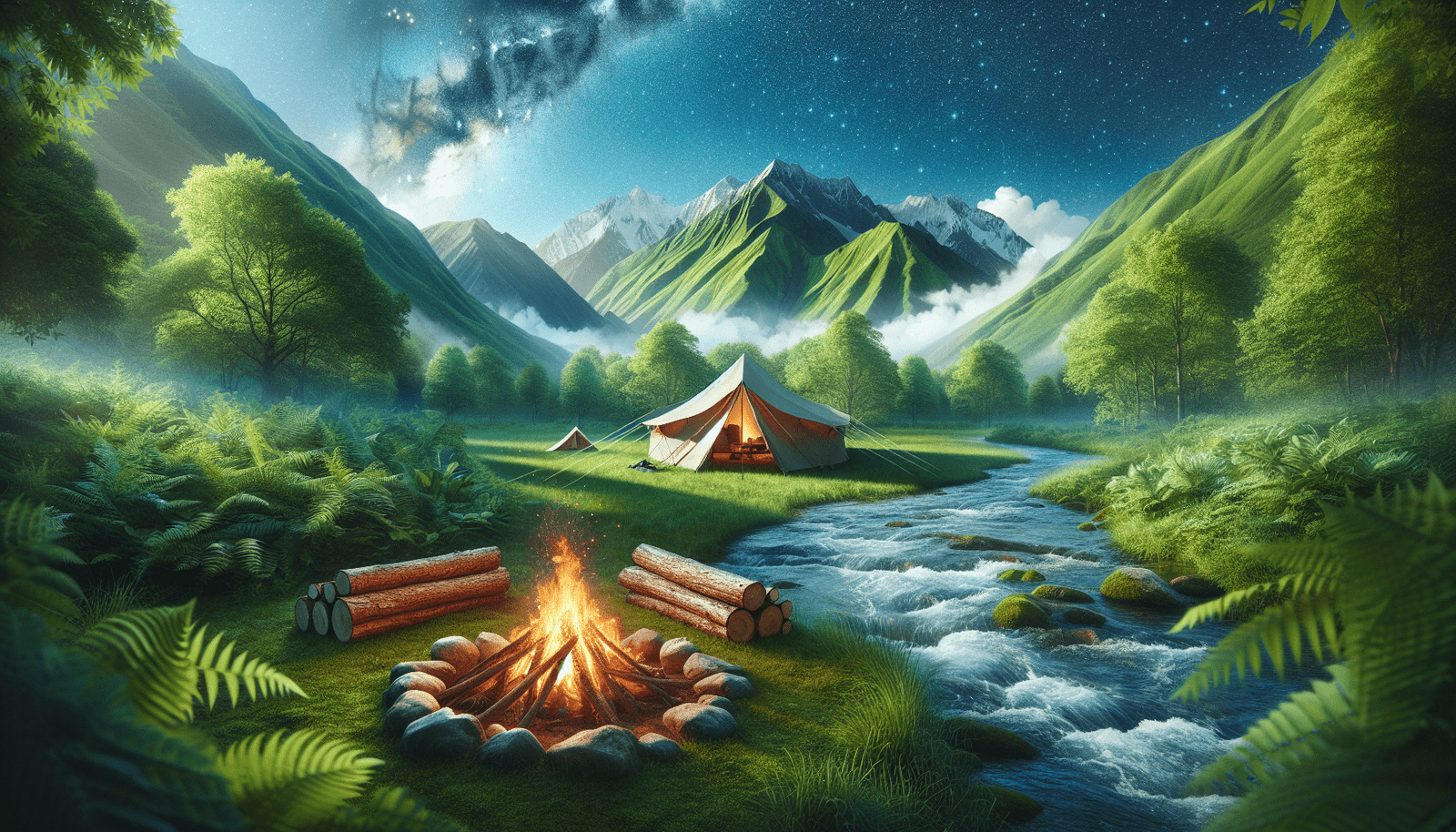Looking for a spot that ensures both safety and comfort can make a world of difference in your camping experience. In “How to Choose a Safe and Comfortable Campsite,” you’ll discover practical tips and essential insights to help you scout the perfect location for your next outdoor adventure. From finding flat, debris-free ground to choosing a site that’s well-drained and sheltered from the elements, this guide will equip you with the know-how to set up camp with peace of mind. Get ready to enjoy the great outdoors with confidence and ease!
How To Choose A Safe And Comfortable Campsite?
Have you ever found yourself staring at a vast wilderness, wondering how to pick the perfect spot to set up camp? Whether you’re a seasoned camper or a newbie heading out on your first adventure, choosing the right campsite can make or break your outdoor experience. It’s not just about finding a nice patch of ground; safety, comfort, and convenience all play pivotal roles.
Why the Right Campsite Matters
Choosing the right campsite is critical for your safety and comfort. It’s more than just aesthetics; a good campsite offers protection from the elements, reduces risks from wildlife, and ensures you have the essential amenities close by.
The Impact on Your Camping Experience
A well-chosen campsite ensures you wake up well-rested, ready to enjoy a day of adventure. On the other hand, a poor selection can mean a restless night, discomfort, and potential hazards. Let’s dive into the details and help you pick the best spot for your camping trip.
Location, Location, Location
The first consideration when choosing a campsite should always be its location. The spot you select can significantly affect your safety and overall enjoyment.
Proximity to Water Sources
Water is essential, but being too close or too far from it can pose problems. Ideally, you’ll want to be close enough to have easy access for drinking, cooking, and cleaning, but far enough away to avoid flooding and insects.
| Distance to Water | Benefits | Drawbacks |
|---|---|---|
| Less than 100 feet | Easy access | Higher risk of flooding, more insects |
| 100-200 feet | Balance of convenience and safety | Slight walk needed |
| More than 200 feet | Safe from flooding, fewer insects | Need to carry water long distances |
Elevation and Terrain
an ideal campsite should be on relatively high ground to avoid any potential water pooling or flooding. Look for areas with slight elevations but avoid very steep slopes which can be uncomfortable and dangerous.
Weather and Wind Protection
Consider the prevailing wind direction and natural barriers like trees or rocks that can offer some windbreak. Camping in an open field might leave you exposed to the wind, while a sheltered site provides comfort and stability for your tent.
Proximity to Trails and Pathways
Being close to trails is convenient for day hikes and exploration, but you also want to ensure you have some privacy and are not on a well-trodden path.

Evaluating the Ground
Soil and Ground Cover
Look for firm, dry, and flat ground. Avoid areas with roots, sharp rocks, or uneven terrain. Sandy or soft ground can be uncomfortable and difficult to secure your tent stakes.
Vegetation
A ground cover of grass or pine needles can be softer and more comfortable for sleeping, whereas rocky ground can be tough and cold.
Surroundings and Safety
Wildlife
Consider the types of wildlife in the area. setting up close to water might increase your chances of encountering wildlife looking for a drink. Research the local wildlife to understand the potential risks and how to mitigate them.
Tree Hazards
Avoid setting up under dead trees or branches, which could fall with a strong wind. Look for healthy trees that provide shade without posing a risk.

Comfort Essentials
Shade and Sunlight
Position your tent to get morning sunlight, which can help you wake naturally and warm up your tent. However, avoid spots that receive direct sunlight throughout the hottest parts of the day.
Privacy
Choose a spot that offers some natural privacy from other campers. Vegetation, hills, or rocks can provide a natural barrier.
Natural Amenities
Look for natural amenities like flat rocks for seating, trees for hammocks, or firewood for your campfire. These little extras can significantly enhance your camping experience.
Environmental Considerations
Leave No Trace Principles
Choose a site that allows you to adhere to Leave No Trace principles. This includes minimizing camp impact, disposing of waste properly, respecting wildlife, and being considerate of other visitors.
Erosion and Impact
Avoid fragile ecosystems and heavily impacted areas. Stick to established campsites whenever possible to minimize your impact on the environment.
Checklist for Choosing a Campsite
To help you with your campsite selection, here’s a detailed checklist you can use:
-
Safety Considerations:
- Proximity to water
- Elevation and terrain
- Wind protection
- Distance from wildlife habitats
-
Comfort Factors:
- Type of ground cover
- Presence of shade and sunlight
- Natural windbreaks
- Access to trails and pathways
-
Environmental Responsibility:
- Adherence to Leave No Trace principles
- Minimal impact on the environment
- Choosing established campsites
Conclusion
Choosing the perfect campsite is more art than science, requiring you to balance safety, comfort, and environmental care. Be mindful of your surroundings, and always aim to leave your campsite better than you found it. Happy camping, and may your nights be peaceful and your adventures memorable!
Taking the time to choose a safe and comfortable campsite ensures not only your well-being but also that of the natural world around you. Plus, it guarantees a much more enjoyable experience, free from unnecessary hassles and risks. So next time you’re setting up camp, remember these tips, and you’ll be well on your way to a perfect outdoor adventure!
